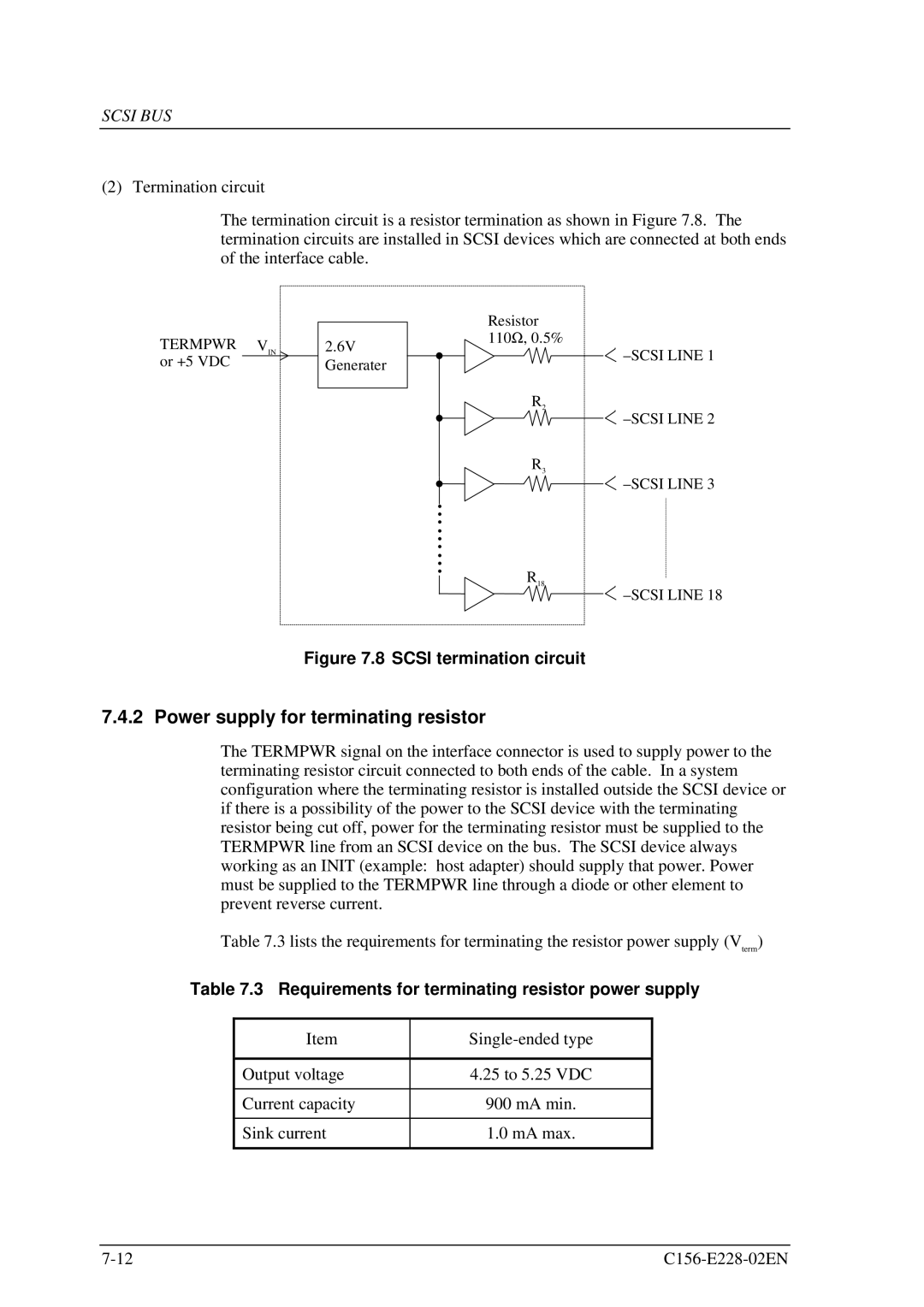
SCSI BUS
(2) Termination circuit
The termination circuit is a resistor termination as shown in Figure 7.8. The termination circuits are installed in SCSI devices which are connected at both ends of the interface cable.
|
|
| Resistor |
TERMPWR VIN | 2.6V |
| 110Ω , 0.5% |
| |||
or +5 VDC | Generater |
| |
|
| ||
|
|
| R2 |
|
|
| |
|
|
| R3 |
|
|
| |
|
| • |
|
|
| • |
|
|
| • |
|
|
| • |
|
|
| • |
|
|
| • |
|
|
| • |
|
|
| • |
|
|
| • | R18 |
|
|
| |
|
|
|
Figure 7.8 SCSI termination circuit
7.4.2 Power supply for terminating resistor
The TERMPWR signal on the interface connector is used to supply power to the terminating resistor circuit connected to both ends of the cable. In a system configuration where the terminating resistor is installed outside the SCSI device or if there is a possibility of the power to the SCSI device with the terminating resistor being cut off, power for the terminating resistor must be supplied to the TERMPWR line from an SCSI device on the bus. The SCSI device always working as an INIT (example: host adapter) should supply that power. Power must be supplied to the TERMPWR line through a diode or other element to prevent reverse current.
Table 7.3 lists the requirements for terminating the resistor power supply (Vterm)
Table 7.3 Requirements for terminating resistor power supply
Item | |
|
|
Output voltage | 4.25 to 5.25 VDC |
|
|
Current capacity | 900 mA min. |
|
|
Sink current | 1.0 mA max. |
|
|
